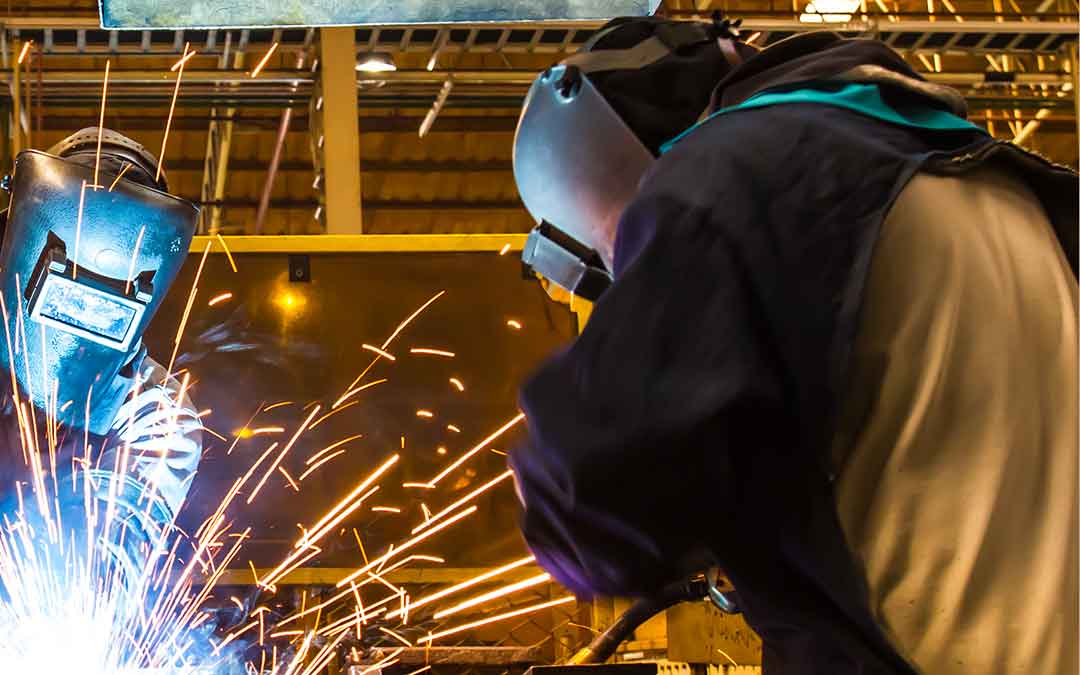Hot work activities include riveting, welding, flame cutting, and other fire or spark-producing operations, frequently a part of the construction and shipbuilding industries.(1) Although these tasks are mandatory in many operations, they are highly flammable and can cause many fires.
Measures to avoid fire incidents leading to a loss of property, severe injuries, or even death should be implemented. During such activities, a fire watch is assigned as one of the safety precautions and it plays an important role in the safety measures.
In this article, we’ll cover what a fire watch is, fire watch duties, roles and responsibilities within those duties, and more. Let’s begin!
What Is A Fire Watch?
The National Fire Protection Association (NFPA) defines a fire watch as a temporary measure where a trained person or people are assigned to a building or area to watch for fire hazards and prevent fires from occurring.
Having a fire watch is necessary simply because the fire prevention and protection mechanisms may not be effective all the time. A fire watch is made by either an individual or group that’s in charge of constantly observing operations using fire.
Common examples of hot work operations may include riveting, welding, flame cutting, and other fire or spark-producing operations. Fire watch duties include halting work and taking preventive measures to ensure that conditions are safe once again. A key thing to note here is that the hot worker performing the hot work can’t be a part of the fire watch while working since they would not quickly react as needed.
When Would You Need A Fire Watch?
A fire watcher duty can be necessary in various different operational settings. Some key examples of such setting include:
- Flying, sparks, welding slag, and slates may pass through a given opening and cause a fire.
- Fire-resistant guards or curtains are not used to stop the spread of fire or fire ignition of other adjacent flammable materials.
- Flammable materials within a distance of 35 feet of the hot work location cannot be taken away or guarded.
- Hot work occurs on near insulation, explosive backed or otherwise, and other combustible coatings and sandwich-type construction that cannot be avoided or barricaded.
- If materials are able to be brought into connection with the bulkheads, decks, or partitions, they may catch fire by the effects of conduction or radiation.
- This hot work is within the specified distance to which it can be ignited by heat radiation or conduction on insulated pipes, bulks, decks, partitions, overheads, or unprotected combustible pipes or cables.
Fire Watch Duties and Responsibilities
Fire watch duties play a vital role in fire prevention during hot work activities. Their responsibilities begin before the hot work starts and continue well after it concludes. Key duties include:
- Training and Preparedness – Fire watch personnel must be trained to conduct an inspection of the space before the hot work is conducted. to fires in areas exposed to hot work. They need to know how to operate a fire extinguisher when necessary. They need to be familiar with the specific fire hazards associated with the tasks being performed.
- Continuous Monitoring – The fire watch guard duties include continuously observing the hot work area, including during breaks, to ensure no fire hazards go unnoticed. If the fire watch needs to leave, a qualified replacement must be assigned to maintain vigilance.
- Effective Communication – Fire watch personnel must be able to effectively communicate with workers performing the hot work. They need to alert workers immediately if a fire is detected and coordinate the response.
- Physical Capability – Fire watch personnel must be physically capable of performing the necessary duties, which may include using fire extinguishing equipment and moving quickly to address fire hazards.
- Stopping Work if Necessary – The fire watch has the authority to stop work if any changes occur that increase the risk of fire. This includes the introduction of flammable materials or changes in the hot work environment.
Duties and Responsibilities of the Employer
Employers must protect fire watch duties and workers from fire hazards by:
- Developing and implementing a written Fire Safety Plan.
- Reviewing the Fire Safety Plan with employees.
- Providing a copy of the Fire Safety Plan to outside organizations expected to respond to fires.
- Informing all employers on the worksite about fire-related hazards and emergency procedures.
- Assigning safety and health responsibilities for fire protection.
- Establishing designated and non-designated areas for hot work.
- Maintaining safe conditions free from fire hazards.
Before and During Hot Work
Effective communication and preparation are essential before and during fire watch job responsibilities and hot work activities. Key steps include:
- Establishing Communication – There must be clear communication between the employees performing the hot work and the fire watch personnel. This ensures everyone is aware of the potential fire hazards and the procedures for responding to a fire.
- Preparing Fire Extinguishing Equipment – Appropriate fire extinguishing equipment, such as carbon dioxide, dry chemicals, or water extinguishers, must be fully charged and readily accessible. Fire watch personnel should be trained in the use of this equipment.
- Documenting Restrictions and Authorizations – Any restrictions or authorizations related to the hot work activity should be documented on the hot work permit, Marine Chemist Certificate, and/or the SCP’s log of inspections and tests. This documentation helps ensure all safety protocols are followed.
- Continuous Monitoring – Fire watch duties must be continuous, including during breaks in hot work activities. If the fire watch needs to leave the hot work area, the employer must assign a qualified replacement to maintain safety.
Stopping Hot Work
Fire watch duties include stopping hot work if any changes occur that could result in or contribute to the spread of fire. This includes:
- Introduction of Flammable Materials – If flammable or combustible materials are introduced into the hot work area, the fire watch must stop the work and notify a supervisor or the employer’s designated person for instructions on how to restore safe conditions.
- Changes in the Hot Work Environment – Any changes in the hot work environment that increase the risk of fire, such as changes in ventilation or the presence of additional heat sources, warrant stopping the work.
- Multiple Workers in Designated Areas – When multiple workers are performing hot work in a designated fire watch area, all hot work activity must cease until safe conditions are restored.
Conclusion
Fire watch duties are important for maintaining safety during hot work operations. A fire watcher’s vigilance and quick response can prevent fires from causing property damage, injuries, or worse. Employers must ensure that fire watch personnel are properly trained and equipped to perform the duties of fire watch and that all safety protocols are followed.
Learn more about Illustra Pro’s Fire Watch Certification Course and book your training online today to help create a safer environment and mitigate the risks associated with hot work activities.
(1)Definition by OSHA 1917.152 for Marine Terminals

